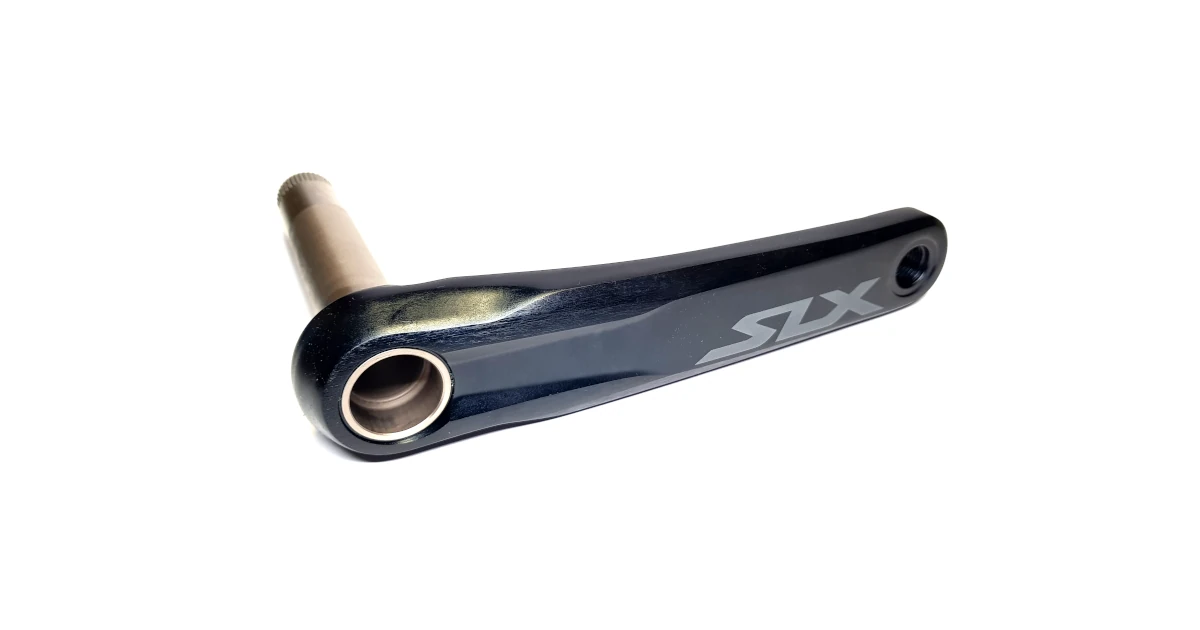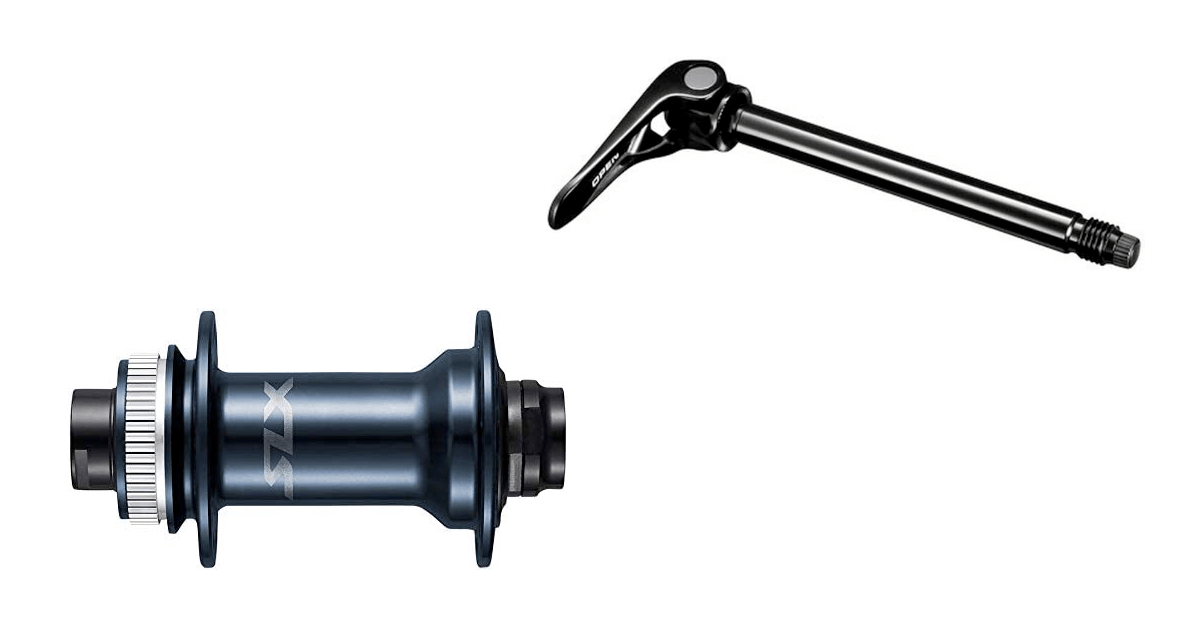What Is Shimano Shadow RD? Features and Benefits
What is Shimano’s Shadow RD used in their latest rear derailleurs? This article explains its features and the benefits of choosing Shadow RD.
Posted at: Mar 7, 2024
This article explains what a BOOST crank is, how it differs from conventional MTB cranks, and provides guidance on selection across different manufacturers.

Table of contents
Sponsored Link
In the world of mountain bikes, frames and hubs with a 148mm rear-end spacing are referred to as using the “BOOST” standard, while those with a 157mm spacing are known as “SUPER BOOST.”

MTB End Standards: What to Consider When Buying
Detailed explanation of MTB end standards! What is the boost standard? What is the O.L.D. that fits your MTB, points to keep in mind when buying an MTB, etc.
At the same time, you’ll also find what’s called a “BOOST crank” for MTBs.
Strictly speaking, a BOOST crank is not a new standard for cranks or bottom brackets. Rather, it’s a crank designed to be compatible with rear ends using the BOOST standard.
A BOOST crank is primarily designed to correct the altered chainline caused by the BOOST rear-end spacing. So, instead of thinking of it as a “BOOST crank,” it’s more accurate to describe it as “a crank compatible with BOOST rear ends.”
With a BOOST rear end, the spacing is wider than the traditional 142mm thru-axle standard, which shifts the chainline outward toward the rear. This happens because, even though the rear end is wider, the distance from the derailleur to the largest cog (low gear) remains the same.
As a result, the chainline becomes more angled, which can negatively affect shifting performance. To fix this issue, the front chainring is shifted outward, realigning the chainline properly. This is the role of a BOOST-compatible crank.
MTB cranks should be selected according to the rear-end spacing of your bike. Manufacturers typically list the compatible rear-end widths in the spec sheets, so be sure to match the crank with your bike’s configuration.
Shimano offers MTB cranks with different crank axle lengths based on rear-end spacing. The difference can be found in the last two digits of the model number.
FC-MXX00FC-MXX20 / FC-MXX25FC-MXX30FC-MXX20-B2These are the general rules. The differences come down to the axle length and the presence of spacers. The non-drive (left) crank arm is the same across all models.
BOOST-compatible cranks come with spacers that go on both sides of the spindle, so your existing bottom bracket can usually still be used.
The following is the model lineup of XTR M9100 series cranksets along with their corresponding compatible rear-end widths.
| Model Name | Front Gearing | Q-Factor | Chainline | Recommended Rear End (Thru) | Recommended Rear End (QR) |
|---|---|---|---|---|---|
| FC-M9100-2 | 2 | 162 | 48.8 | 142 | 135 |
| FC-M9120-B2 | 2 | 168 | 51.8 | 148 | 141 |
| FC-M9100-1 | 1 | 162 | 52 | 142, 148 | 135, 141 |
| FC-M9120-1 | 1 | 168 | 52 | 142, 148 | 135, 141 |
| FC-M9125-1 | 1 | 174 | 55 | 148 | - |
| FC-M9130-1 | 1 | 181 | 56.5 | 157 | - |
The Deore XT M8100 series and SLX M7100 series share the same model naming conventions and specifications as the XTR series. While the specs are almost identical to XTR, the main difference is a wider Q-factor.
| Model Name | Front Gearing | Q-Factor | Chainline | Recommended Rear End (Thru) | Recommended Rear End (QR) |
|---|---|---|---|---|---|
| FC-M8100-2 | 2 | 172 | 48.8 | 142 | 135 |
| FC-M8120-B2 | 2 | 178 | 51.8 | 148 | 141 |
| FC-M8100-1 | 1 | 172 | 52 | 142, 148 | 135, 141 |
| FC-M8120-1 | 1 | 178 | 55 | 148 | 141 |
| FC-M8130-1 | 1 | 181 | 56.5 | 157 | - |
| FC-M7100-2 | 2 | 172 | 48.8 | 142 | 135 |
| FC-M7120-B2 | 2 | 178 | 51.8 | 148 | - |
| FC-M7100-1 | 1 | 172 | 52 | 142, 148 | 135, 141 |
| FC-M7120-1 | 1 | 178 | 55 | 148 | 141 |
| FC-M7130-1 | 1 | 181 | 56.5 | 157 | - |
SRAM also offers three types of cranksets to match different rear-end widths in MTB, all compatible with the BOOST standard. Similar to Shimano, the crank spindle length increases depending on the standard.
SRAM’s DUB standard uses a combination of inner and outer spacers on both sides depending on the bottom bracket and crank spindle length.
DUB MTB Bottom Bracket Spacer Chart | SRAM
In other words, unlike Shimano, you match the appropriate DUB bottom bracket with the compatible BB shell and crankset for correct installation.
Sponsored Link
Shimano MTB Component Grades and Compatibility
The following is a list of Shimano MTB component grades and model numbers. Also includes compatibility with components for road and gravel bikes.
Wire Types and Differences for Road Bikes, MTB, and Hybrid Bikes
This is a summary of the types and differences of wires for MTB and hybrid bikes for road bikes. The interchangeability of each, and how the wires affect your riding.
Choosing a Rear Derailleur for Road, MTB, or Hybrid Bikes
How to choose a new rear derailleur for your road bike, MTB, or hybrid bikes, what to look for in a combination of sprockets, and the differences between different grades.
SENSAH's components for MTB and gravel
This is a summary of Chinese bicycle parts manufacturer SENSAH's components for MTB and gravel. It also includes the equivalent Shimano componentry grade and compatibility with Shimano parts.
Q Factor: Measurement, Determination, and Adjustment
Q-factor is an important factor for improving pedaling efficiency. we summarize what Q-factor is, how to measure it, how to determine the proper value, and how to adjust it.
Gear Ratios: Cross, Wide, and the Deep World
Cross ratios, wide ratios, the world of gear ratios is a deep one. We will take a look at the advantages and disadvantages of changing the number of teeth on the sprocket, and the combination with the chainring.
Summary of electric components for MTB
This section summarizes the types of electric components for MTB and the advantages and disadvantages of each.
MTB Dropper Seatposts: Types and Considerations
The dropper seat post is becoming a "must-have" part for MTB. Here we summarize the lineup, specifications, and features of dropper seatposts for MTB from major manufacturers, as well as a comparison of each manufacturer and points to consider when choosing a dropper seatpost.
Shimano Mechanical Brake Levers for MTB and Hybrid Bike
Shimano mechanical brake levers are now few and far between. The following is a summary of the current model lineup, specifications, and compatible components.
SRAM Component Grades and Compatibility Summary for MTB
This section summarizes the grades, features, and compatibility of SRAM's Eagle series of components for MTB, as well as the electric component AXS and the latest component, Eagle Transmission.
What Is Shimano Shadow RD? Features and Benefits
What is Shimano’s Shadow RD used in their latest rear derailleurs? This article explains its features and the benefits of choosing Shadow RD.
Shimano Chain Compatibility for Road, MTB, and Hybrid Bikes
An overview of Shimano chain compatibility across road bikes, mountain bikes, and hybrid bikes. Includes guidance on how to choose the right chain for your drivetrain.
Shimano ESSA Lineup and Compatibility with Existing 8-Speed Parts
An overview of Shimano's newly released 8-speed component group "ESSA" and its compatibility with existing 8-speed parts.
SRAM Cassette Compatibility Guide
Compatibility guide for SRAM cassettes used in road and MTB bikes. Find matching drivetrains and wheels easily.
Compatibility Guide for SRAM MTB Components
A detailed explanation of compatibility between SRAM MTB components. This guide outlines which parts can be used together and which combinations are not compatible.
Road and MTB Sprockets Compatibility Overview
A guide to the compatibility between road and MTB sprockets, explaining whether they can be used together with different components.
Shimano CUES Cassette Compatibility Guide
A detailed guide to the compatibility of Shimano CUES series cassettes. Includes an overview of compatible rear derailleurs, chains, and wheels.
Shimano Hydraulic Brake Hose and Connector Standards Guide
An explanation of the differences between Shimano’s hydraulic brake hoses BH90 and BH59, the types of connecting bolts, and how to choose the right hose for your brake system—including key points to watch out for.
Types and Compatibility of Shimano Di2 Batteries
The Di2 battery is the core of the Shimano Di2 system, influencing the overall system layout. This article explains the different types and their compatibility.
Shimano Di2 Wire Types and Compatibility
Overview of Shimano Di2 electric wire types and their compatibility with Di2 components.
How to Identify Shimano Di2 Generations
Explains the generational differences in Shimano Di2 components and their compatibility. Includes a list of component series and their corresponding generations.
In-Depth Guide to Shimano 12-Speed Cassette Compatibility
A detailed explanation of the key compatibility factors when using Shimano's 12-speed cassettes—specifically the required wheel (freehub) and drivetrain, which differ significantly from previous 11-speed systems.
Perfect Guide to Shimano 11-Speed Cassette Compatibility
A detailed explanation of two key compatibility factors when using Shimano 11-speed cassettes: the required wheel (freehub) and drivetrain.
Perfect Guide to Shimano 10-Speed Cassette Compatibility
A detailed explanation of two key compatibility factors when using Shimano 10-speed cassettes: the required wheel (freehub) and drivetrain.
In-Depth Guide to Shimano 9-Speed Cassette Compatibility
A comprehensive explanation of two key compatibility factors when using Shimano 9-speed cassettes: the required wheel (freehub) and drivetrain.
Shimano I-SPEC Shift Lever Mount Standards Explained
A complete guide to Shimano's I-SPEC shift lever mount standards, covering features, differences between models, and compatibility.
Shimano Hydraulic Disc Brake Standards and Selection Guide
Unlike mechanical brakes that only pull a cable, hydraulic disc brakes come with various standards and technologies depending on the manufacturer. This article highlights Shimano’s hydraulic disc brake technologies and standards, along with key points to consider when selecting one.
Shimano CUES Components Lineup and Compatibility Guide
A comprehensive guide to Shimano's new CUES component group for MTB and lifestyle categories, including gear ratios, part lineup, and compatibility with traditional components.
TPU Inner Tube: Features, Pros, and Cons for Road Bikes and MTB
TPU inner tubes are gaining attention as the third force in bicycle tires. We summarize its features, advantages and disadvantages of using it on Road bikes and MTBs, and major manufacturers.
Shimano Mechanical Brake Levers for MTB and Hybrid Bike
Shimano mechanical brake levers are now few and far between. The following is a summary of the current model lineup, specifications, and compatible components.